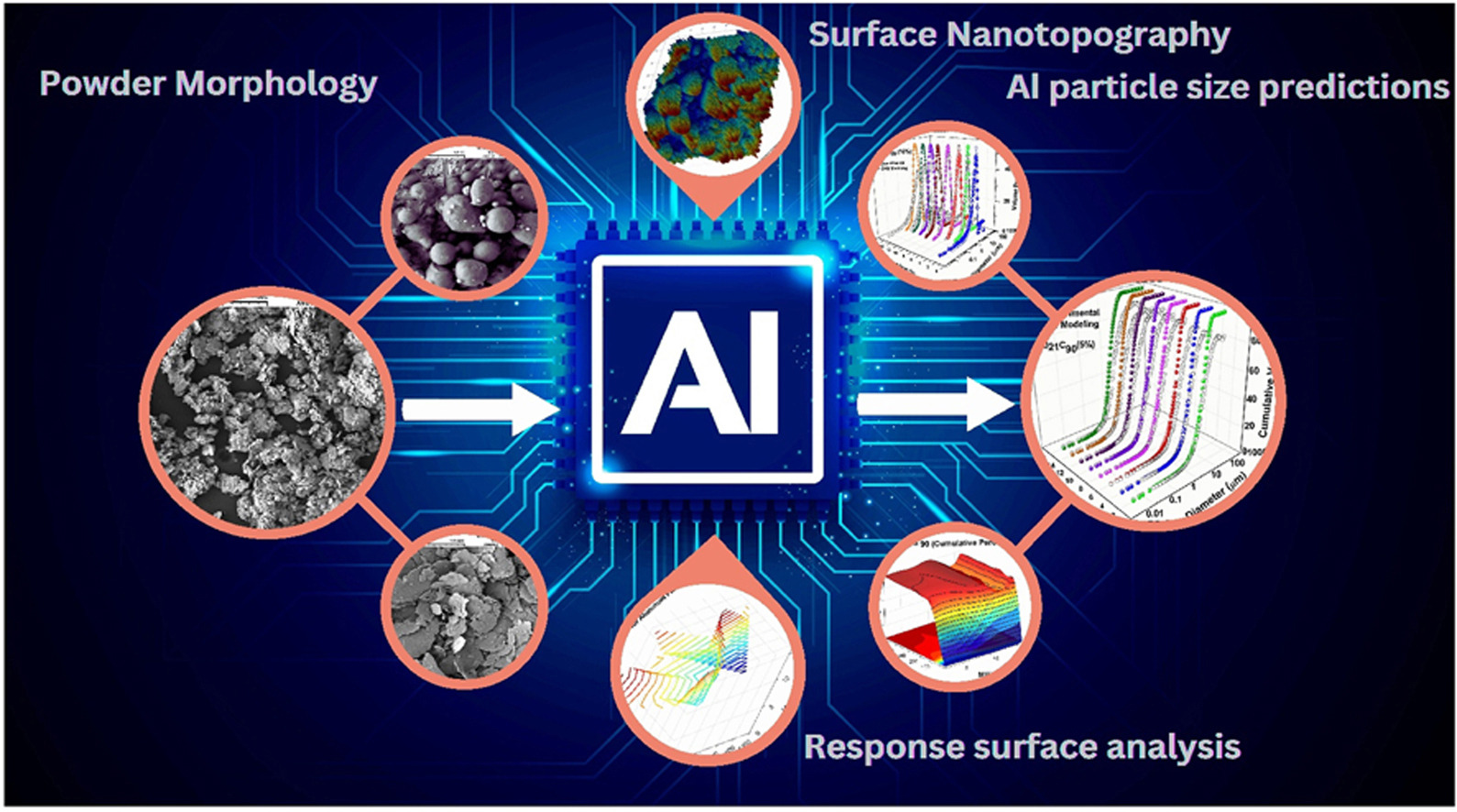• SVM models achieved R2 up to 0.99 for accurate particle size distribution prediction.
• SEM analysis revealed morphological transitions during Al-B4C powder milling.
• Surface roughness increased to 0.39 nm,analyzed using SPIP™ and GPR models.
• Mid-sized B4C particles showed optimal reduction with balanced milling times.
• Increasing B4C content to 10 % improved SVM accuracy in capturing milling dynamics.
This study presents a machine learning-based approach using Support Vector Machines (SVM) to model the particle size distribution (PSD) and predict surface characteristics of Al-B4C nanocomposite powders synthesized through high-energy ball milling. Two SVM kernels, Polynomial and Radial Basis Function (RBF), were applied to simulate PSD curves and surface morphology, with experimental validation conducted via laser particle size analysis and scanning electron microscopy (SEM). The models demonstrated strong predictive capabilities, achieving R2 values between 0.91 and 0.99 and cross-validation coefficients (q2) from 0.93 to 0.99. Normal distribution models yielded lower RMSE values (0.11–2.13) compared to cumulative distribution models (4.34–6.55), indicating higher precision in modeling. SEM analysis revealed morphological transitions during milling, with particles evolving from spherical to fragmented shapes after 4 h. Surface metrics including roughness, waviness, and isotropy were quantified, showing that isotropy decreased from 82.48 % at 0 h to 57.69 % at 4 h due to directional deformation, then partially recovered to 62.50 % at 10 h. Gaussian Process Regression (GPR) showed strong alignment with experimental surface trends and accurately predicted nanoscale topographic parameters. Response Surface Methodology (RSM) was employed to visualize size reduction behavior for B4C particles with initial sizes of 90, 700, and 1200 nm. For 700 nm particles, size reduction stabilized beyond 10 h, while 90 nm particles exhibited rapid refinement within the first 5–10 h. In contrast, 1200 nm particles showed slower, continuous reduction requiring >15 h of milling. SVM models successfully captured these nonlinear trends,with minor underestimations at intermediate time points. RSM plots for aluminum particle sizes (21 and 71 μm) revealed that Al-21 led to stable and uniform distributions,whereas Al-71 exhibited nonlinear behavior with volume percentage drops under specific conditions. These findings confirm that SVM and GPR are robust tools for modeling PSD and surface evolution in ball-milled nanoparticles.

